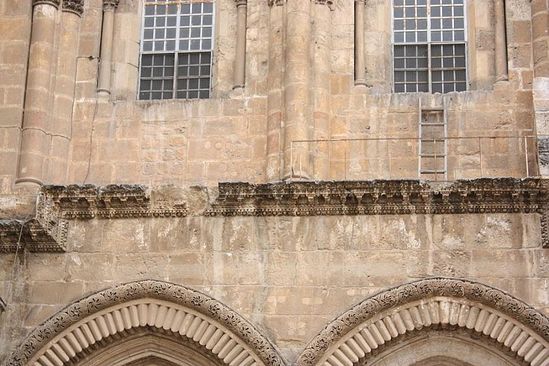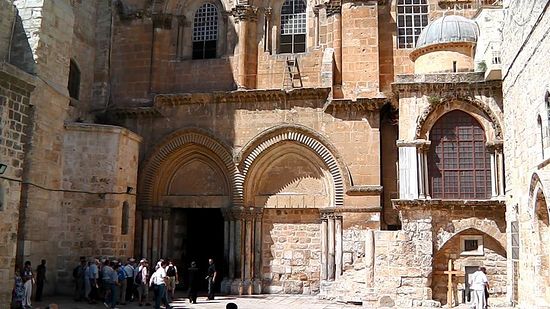SOURCE: Slate
Atlas Obscura on Slate is a new travel blog. Below is an excerpt from the forthcoming Atlas Obscura book.
Venerated as the site of the crucifixion, burial, and resurrection of Jesus, the Church of the Holy Sepulchre is perhaps the world’s most sacred Christian pilgrimage site. It is also the location of a 150-year-old argument over a ladder.
Under an 1852 mandate, the care of the Church of the Holy Sepulchre is shared by no less than six Christian denominations: the Greek Orthodox, Armenian Apostolic, Roman Catholic, Coptic, Ethiopian, and Syriac Orthodox churches. The Holy Sepulchre’s edifice is carefully divided into sections, with some commonly shared, while others belong strictly to a particular sect. A set of complicated rules governs the transit rights of the other groups through each section on any given day, and some of the sections of the church remain hotly disputed. Arguments and fistfights over territory and boundaries are not uncommon.
One such area is a small section of the roof which is disputed between the Copts and Ethiopians. At least one Coptic monk at any given time sits there on a chair placed on a particular spot to express this claim. On a stifling summer day in 2002, a monk moved his chair eight inches to find shade. This was interpreted as a hostile act and violation of boundaries, and 11 were hospitalized after the fight that ensued.
The Church of the Holy Sepulchre’s “immovable ladder” is a centuries-old symbol of this extreme territoriality. During the early 1800s, a man belonging to an unknown sect placed the ladder on a ledge against an exterior second-floor wall of the church. Due to the imposition of the status quo and the fear of inciting violence, no one has dared touch it since.
Excepting, of course, the time in 1997 when a mischievous tourist named Andy plucked it from the ledge and hid it behind an altar, where it remained undiscovered for weeks. The ladder has since been put back into its “appropriate” spot.



